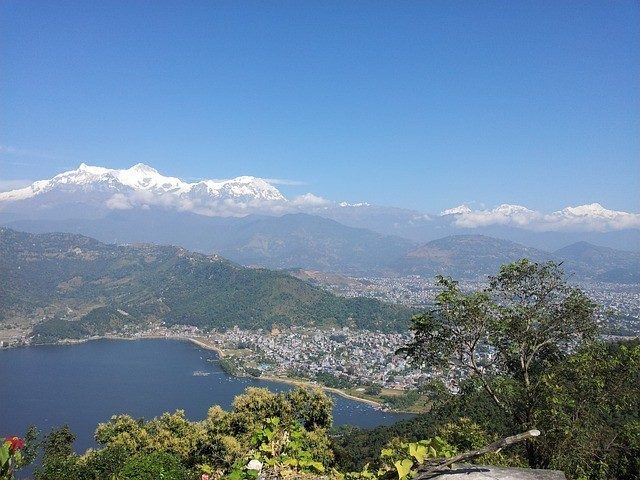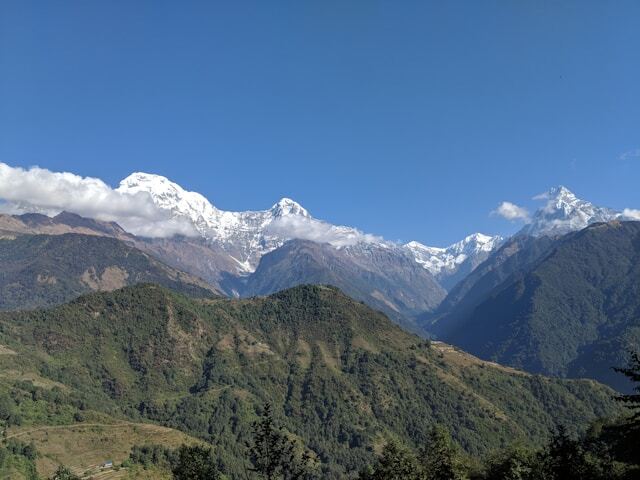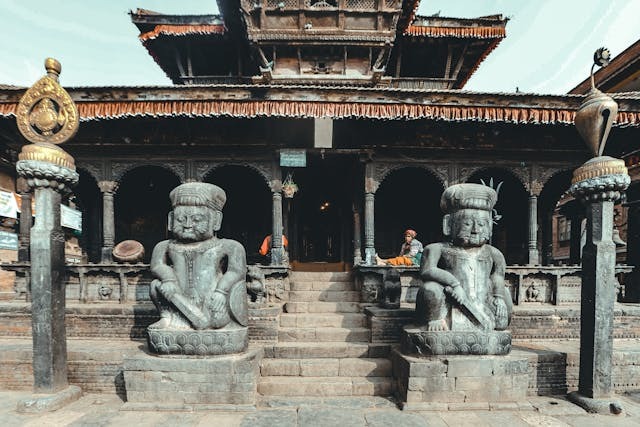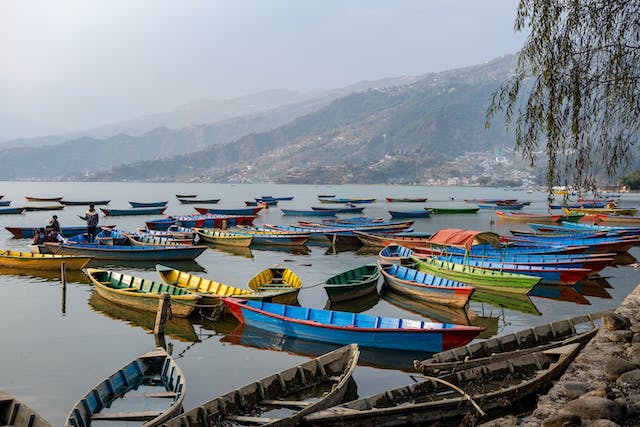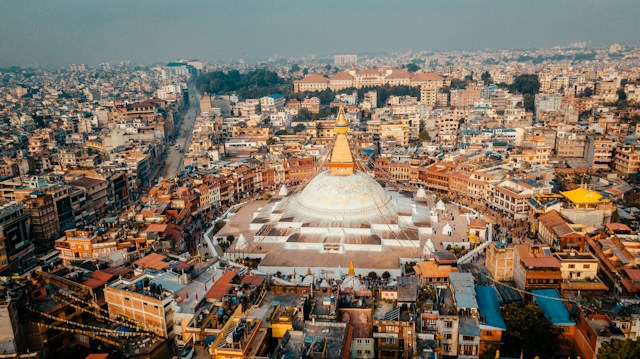Where is Mount Everest located in the world? How long does it take to climb Mount Everest? Excited to know? Let us tell you that Mount Everest is the highest peak of Nepal, as well as the highest peak of the entire world. Here, you can also look at the things to do on Mount Everest.
World’s highest Peak, Mount Everest, lies on the border between Nepal and Tibet at 27°59′ N 86°56′ E and stands at an elevation of 29,032 feet. The height of Everest was slightly changed from 8848 meters to 8848.86 meters successfully measured by the team of Nepal and China in 2020.
The Chinese team also measured Mount Everest Depth. The snow-ice depth was 3.5m (11ft), which is in agreement with a net elevation of 8848m. Before Climbing, it would be easy for you, if you take the Mount Everest Map with you because the Mount Everest Death rate is very high. Death bodies in Mount Everest seem littering because it is so expensive and dangerous to get them down.
After the devastating earthquake that destroyed thousands of buildings and took thousands of lives in 2015, the height of the highest mountain in the world was also thought to be affected. As a result, Nepal, for the first time, measured the height of Everest which is an appreciable achievement for Nepal.
Different countries have their own name for Mt. Everest. It is known as Sagarmatha in Nepal and Chomolungma in Tibet. China calls it Qomolangma Feng. The word Chomolungma is a Tibetan word that means “mother goddess of the world” and Sagarmatha is a Nepalese word that refers to “Goddess of the Sky”.
See: Top 10 Tips for Climbing Mount Everest
Why is it called Everest?
It is believed that when the Indian-Australian Plate shifted north from south, it caused the Himalayan ranges to thrust upward causing the plate to subduct (forcefully shifting downward) causing the collision with Eurasian Plate about 50 million years ago. The actual Himalayan range finally started to rise and take shape about 30 million years ago. The interesting fact about Everest is that it is shifting a few inches towards the northeast every year causing a slight fraction during the process.
Everest is formed as a result of nappes, the process of folding multiple layers of rocks on themselves. The lowest part consists of metamorphic schists and gneisses which are covered by igneous granites. Above that resides sedimentary rocks of marine origin.
Everest is very famous for its three-sided pyramid shape. The three flat planes that constitute the sides are known as faces and the point or line formed by the joining of two faces is known as a ridge. Everest is the ultimate goal of any mountaineer all over the world. Many climbers lose their lives in the quest to conquer and few survive to tell the story of their achievement.
Difference Between Mountain and Peak
A mountain is an elevated landmass that is significantly higher in elevation and rises above sea level steeply. A mountain can be a single stand-alone or collection of the various mountains forming a massif. However, a peak is the high point of any mountain.
There can be numerous peaks but the highest peak is known as the summit. In order to complete the expedition, you have to reach the summit of the mountain. When someone says they have climbed the mountain they mean they successfully reached the peak.
The summit of Everest consists of rock-hard snow at the bottom and softer snow on top of that. The softer snow is prone to fluctuate every year by 10 to 20 feet or up to 6 meters. During the cold and blizzard winter of September, the snow reaches its maximum level and the lowest level of snow is measured in May just after the monsoon.
The oxygen level at the top of Everest is only one-third of sea-level oxygen level. The cold and harsh weather, lack of oxygen takes a lot of climber’s life every season.
Famous Glaciers in Everest
Everest is covered by glaciers from the slope to the base. Some of the famous glaciers are:
- Kangshung Glacier covering east; the East, Central, and West
- Rongbuk (Rongpu) glaciers covering north and northwest
- The Pumori Glacier occupying the northwest
- And the Khumbu Glacier covering the west and south
Glacial actions are the major reasons that cause the devastating erosion of Everest and neighbor peaks.
WHAT IS THE EXACT HEIGHT OF MOUNT EVEREST?
The height of Mount Everest was first measured between 1952 and 1954 by the survey of India led by the West India Company. The survey gave the figure of 8848 meters which was accepted all over the world for decades.
A lot of attempts were done to remeasure the exact height of Everest for years. In 1975 a Chinese survey obtained a figure of 8848.11 meters which challenged the initial figure of 8848 meters. In 1987 an Italian survey also conducted the survey through satellite measuring technique and published a figure of 8872 meters which was not accepted around the world.
A lot of surveys were conducted during the time and none of the measurements was recognized globally.
Finally, Nepal itself decided to measure the height of Mount Everest with the help of experts and mountaineers and published a figure of 8848.86 meters which was also approved by the Chinese survey team. As of now 8848.86 meters is the exact height of Mount Everest.
Habitation on Mount Everest and Major Occupation
It is obvious that no living being can survive on Mount Everest but the valleys below the mountain are habitable. The majority of the people living in the valley near Everest are Tibetan. People living on the south side i.e. Tibet speak Tibetan while people living on the north side i.e. Nepal speaks Nepalese and Tibetan.
The majority of the valley is dominated by Sherpas who are famous worldwide for their climbing skills and achievements. Sherpas live in the Khumbu valley of Nepal ranging up to 4270 meters from sea level. The habitation above 5000 meters is almost impossible even in the summer due to the harsh climate and lack of eatable foods.
The major occupation of the people living in the Everest region is Mountaineering. The area is vastly dependent on tourism. Sherpas are the main guides for any mountaineers trying to reach the summit.
Who was the First Person to Climb MOUNT EVEREST?
In 1953, Tenzing Norgay Sherpa from Nepal and Edmund Hillary from New Zealand made the first official ascent of Everest creating history and inspiring new generations to follow the path.
It was the first time anyone had set foot on the summit of the world’s highest mountain. Many climbers lost their lives trying to achieve the unthinkable.
How long does it take to climb Mount Everest?
Well, the answer varies from person to person, the fastest ascent of Everest is recorded at mind-blowing 10 hours 56 min and 46 sec, achieved by Lhakpa Gelu Sherpa from Nepal in 2003 while the average time taken to reach the summit is 6 to 9 weeks.
Here are some interesting Mount Everest Facts and Records
Few Mount Everest Facts and Records are:
- Junko Tabei, a Japanese mountaineer, author, and teacher became the first-ever woman to reach the summit of Everest in 1975. She has inspired other 625 female mountaineers to achieve this success.
- Pasang Lhamu Sherpa became the first Nepalese woman to conquer the summit in 1961 creating a history.
- Ang Rita from Nepal became the first person to summit Everest 10 times.
- Kami Rita Sherpa from Nepal has climbed Everest a record 25 times.
- Peter Habeler climbed Everest for the first time without any supplementary oxygen.
- Yūichirō Miura from Japan is the oldest summiteer of Everest at the age of 80 years, 224 days.
- Jordan Romero from the USA is the youngest to reach the summit at the age of 13 yrs.10 months, 10 days.
- At least 300 mountaineers have lost their lives attempting to conquer Everest. Some dead bodies are found but still, a lot of dead bodies are buried in Everest.
MOUNT EVEREST CLIMATE
The climate of Everest, especially at the summit, is a nightmare to any living thing. Even in the summer, the warmest Mount Everest temperature is below 0° C. The warmest temperature during July is -19 °C (-2 °F). The coldest month of Mount Everest arrives in January during which the lowest temperature drops as low as −60 °C and an average temperature of only -36°C.
Even during the sunny days of summer, storms can cover the mountains abruptly anytime causing snowfall, while you can barely see the sun during winter. At the summit of Everest, the wind can blow as fast as 160km per hour which is equivalent to 100 miles per hour. The extremely low temperature and falling of precipitation even in the summer results in a higher chance of frostbite to the climbers.
The climate of Mount Everest is infamous and is extremely hard to predict as a sunny day can swiftly turn into a snowy day. Even in such a climate some of the wild animals have adapted to survive and the Mount Everest region is the home to one of the rarest snow leopards – only 500 such species are left in Nepal.
Why is Everest the best Tourist destination?
Mount Everest is not the only mountain in the range above 8000 meters, the mountain range is surrounded by various famous highest mountains of Nepal, the most famous being Lhotse – the 4th highest mountain in the world standing at an elevation of 27,940 ft and 8,516 meters from sea level.
Out of the world’s 14 highest mountains, four reside in the Everest region under two national parks. One is Sagarmatha National park and the other is Makalu-Barun National Park.
The four highest mountains of this mountain range are Mount Everest, Lhotse, Makalu, and Cho Oyu.
Apart from Mount Everest Lhotse is immensely popular among mountaineers for its three peaks all over 8,000 meters in elevation:
- Lhotse main summit (8,516 meters)
- Lhotse Middle (8,414 meters),
- Lhotse Shar (8,383 meters).
Having three major peaks all over 8000 meters is astonishing enough for any mountaineers to start the expedition and conquer the mountain.
Let’s talk about other highest mountains of the Everest range:
1) Nuptse
Mount Nuptse is located in Sagarmatha National Park. Nuptse is a popular commercial mountaineering destination due to its proximity to Everest and easy access.
Standing at an elevation of 7,861 meters, Nuptse has seven major peaks on the east-west ridge:
- Nuptse I (7,861 meters) - main summit
- Nuptse II (7,827 meters)
- Nuptse Shar I (7,804 meters)
- Nuptse Nup I (7,784 meters)
- Nuptse Shar II (7,776 meters)
- Nuptse Nup II (7,742 meters)
- Nuptse Shar III (7,695 meters)
2) Makalu
The 5th highest mountain in the world standing at an elevation of 8,485 meters is only 20 km southwest of Mount Everest. It is situated in Makalu Barun National Park in the Everest range. The name is derived from the Sanskrit word Maha-Kala which means the big black which represents the color of the Mountain. It has a total of three big peaks:
Makalu has three peaks in total:
- Makalu Summit (8,485 meters)
- Kangchungtse or Makalu II (7,678 meters)
- Chomo Lonzo (7,804 meters)
3) Cho Oyu
Cho Oyu, the 6th highest mountain in the world stands at an astonishing elevation of 8,201 meters. The mountain is situated in the Sagarmatha National Park only 20 km west of the great Mount Everest. The name Cho Oyu is derived from the Tibetan word that chomo which translates to “god’s head” or “mighty head”.
Conclusion
There are lots of mountains that are above 6000 meters in Nepal, which makes the Everest range one of the extraordinarily attractive ranges for tourists and mountaineers.
Apart from these mountains, Everest has the world’s best trekking route making it the dream vacation destination for tourists all around the world. Namche Bazaar, the gateway to Everest welcomes thousands of tourists every year.It takes almost 6-7 days to reach the base camp from Lukla airport, one of the dangerous and beautiful airports in the world.
The number of tourists visiting Mount Everest is certainly affected by the covid-19 pandemic now but internal tourism is keeping the economy of the region alive. The tourism sector in Mount Everest is expected to rise rapidly as soon as the lockdown is eased.
